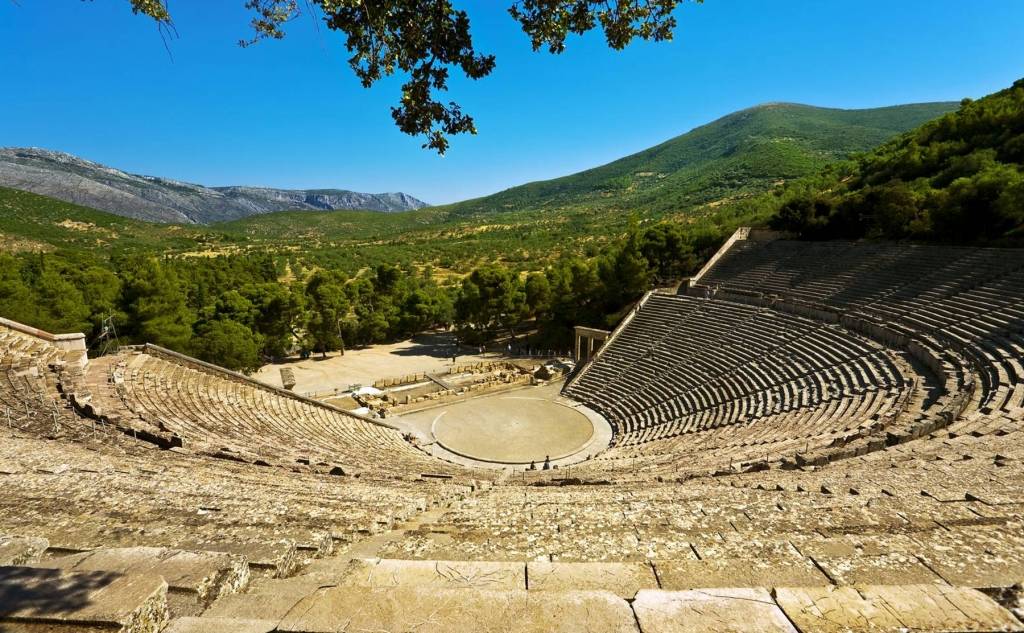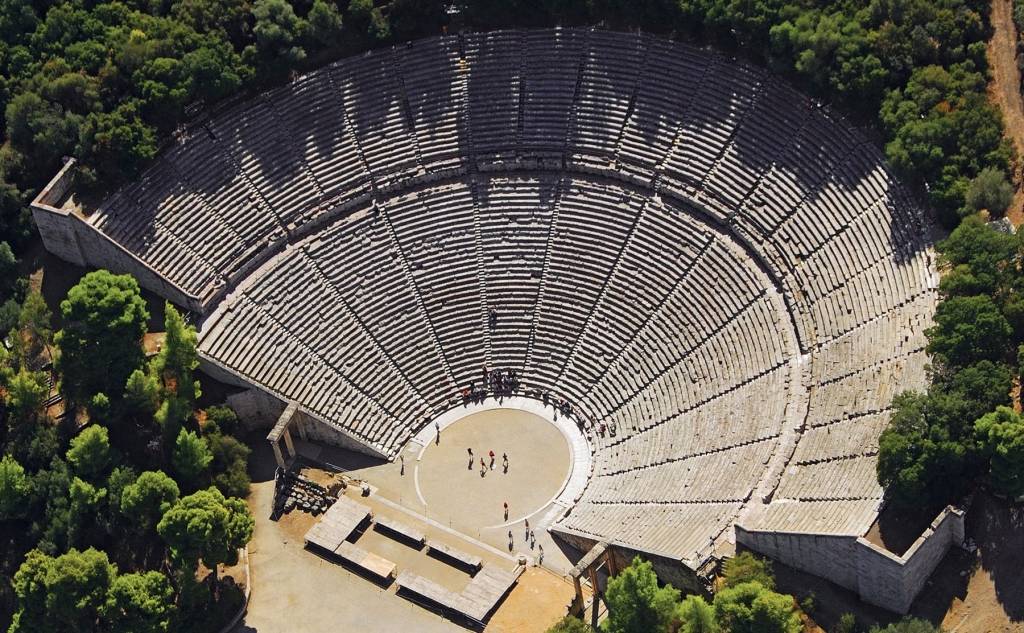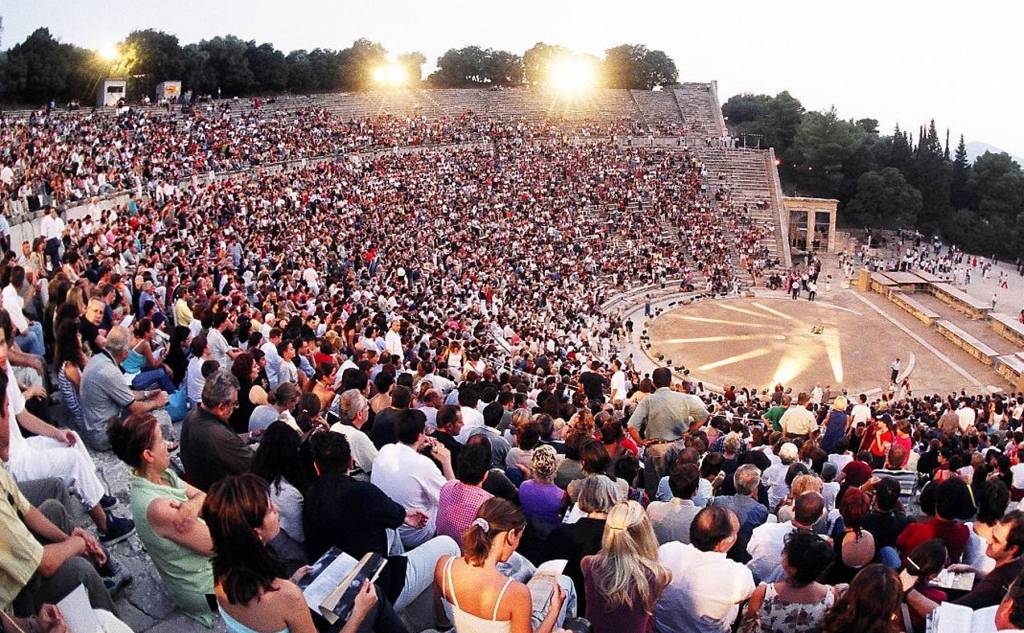The Epidavros Theatre
Highlights
A performance at the ancient theatre of Epidaurus has always been a unique experience.
GET IN TOUCH
Spread the word


The ancient theatre of Epidaurus is strategically located in the fertile plain of Argolis in the eastern Peloponnese, built on the western slope of Mount Kynortios. Specifically, it is located at the southeast end of the sanctuary dedicated to the healing god Asclepius in the Asclepieio of Epidaurus. (Epidaurus was named after the hero Epidaurus, son of Apollo). It is considered the perfect ancient Greek theatre in terms of acoustics and aesthetics and one of the best preserved in the world. It has also been included in the list of World Heritage Sites by UNESCO. A scientific study published in 2007 by the Georgia Institute of Technology demonstrated that the theatre’s fantastic acoustics is due to an advanced design system in which rows of limestone seats filter out low-frequency sounds while amplifying high-frequency sounds.
As traveller Pausanias mentions, the ancient theatre was built in the 4th century BC. (340 BC-330 BC) by architect Polykleitos the Younger as part of the general reconstruction of the sanctuary. With a maximum capacity of 13,000-14,000 spectators, the theatre of Epidaurus hosted performances of ancient drama and musical competitions. It was also used as a means of treating patients, as there was a belief that watching dramatic performances had beneficial effects on patients’ mental and physical health.
Today, the monument maintains the characteristic tripartite structure of a Hellenistic theatre, having a structure that consists of a nave, an orchestra, and a stage. The ancient theatre did not undergo transformations during Roman times like several other Greek theatres.
The stage building of the theatre was built in two building phases. The first phase is chronologically placed at the end of the 4th century BC. and the second in the middle of the 2nd century BC. During the first phase, the orchestra, the lower stage - 12 bleachers with 34 rows of seats each - and the stage building were built. During the second phase, the hollow was extended upwards with the construction of the upper tier - 22 stands with 21 rows of seats each - and the stage took on its Hellenistic form.
The hollow of the theatre is made of limestone material (while its benches are made of tufa stone). It is divided vertically into two unequal parts: the lower hollow or theatre and the upper theatre or epitheatre. The lower rows of the upper and lower concave have the form of a presidency, i.e., positions intended for important persons.
The centre of the theatre is the circular orchestra, 20 metres in diameter. In its centre, there is a circular stone slab, the base of the altar or the so-called “thymeli”. The orchestra is surrounded by a particular underground sewer (the “eurypos”) covered by a cylindrical stone decoration.
The stage building of the ancient theatre, which came to light in ruins, is opposite the hollow and behind the orchestra. The form of the stage dates back to the Hellenistic period and consists of a two-storey stage building and a foreground in front of the stage. Finally, the theatre had two magnificent doors, which have now been restored.
Having been in use for several centuries, the ancient theatre was destroyed in 395 AD and, later, in 426 AD. Theodosius II closed the sanctuary, banning all pagan activities throughout Greece.
The first systematic excavation of the ancient theatre of Epidaurus began in 1881 by the Archaeological Society under the direction of archaeologist Panagis Kavadias. Since 1988, the Epidaurus Monuments Preservation Committee has undertaken the theatre’s maintenance, initially restoring the extreme western bleachers of the theatre, the door of the west passage and the two drains of the orchestra.
The monument is a pole of attraction for many Greek and foreign visitors, while it is also used for the presentation of theatrical performances. It is worth mentioning that the first performance in the ancient theatre of Epidaurus was the tragedy "Electra" by Sophocles, staged in 1938, directed by Dimitris Rodiris, with Katina Paxinou and Eleni Papadakis as the protagonists. Finally, as part of the Epidaurus Festival (which started in 1955), some of the most significant Greek and foreign actors, as well as the famous Greek soprano, Maria Kallas, have given performances at the theatre.




